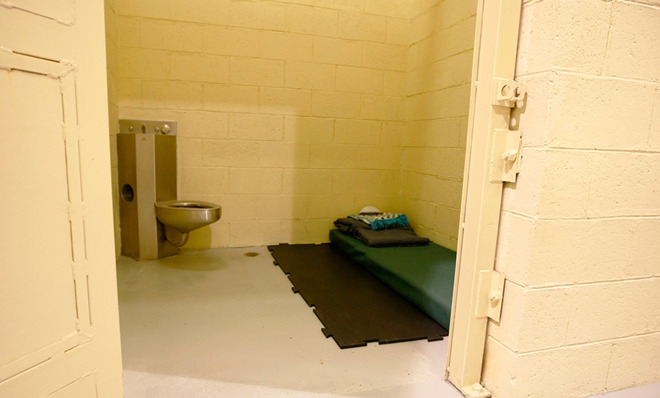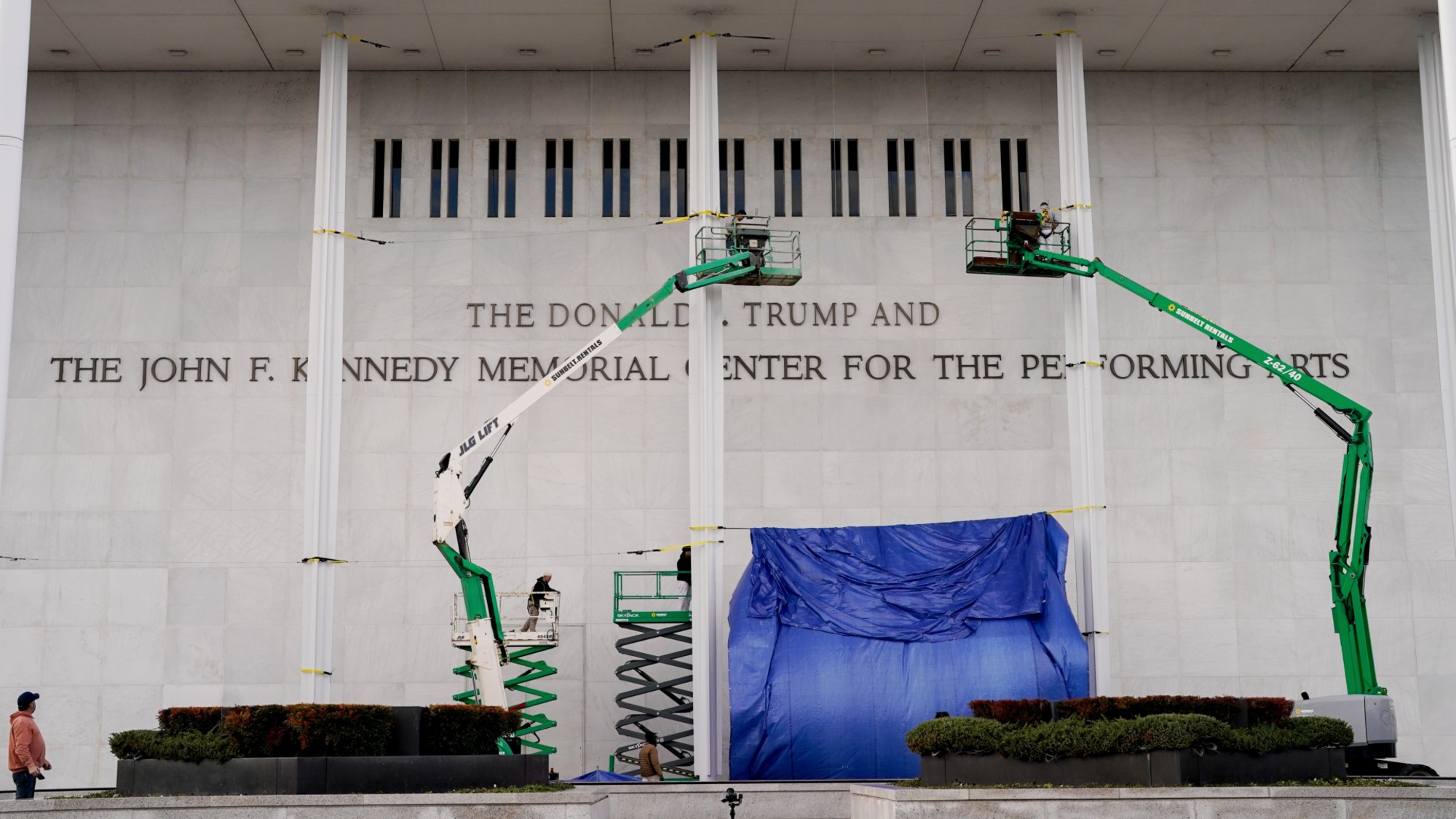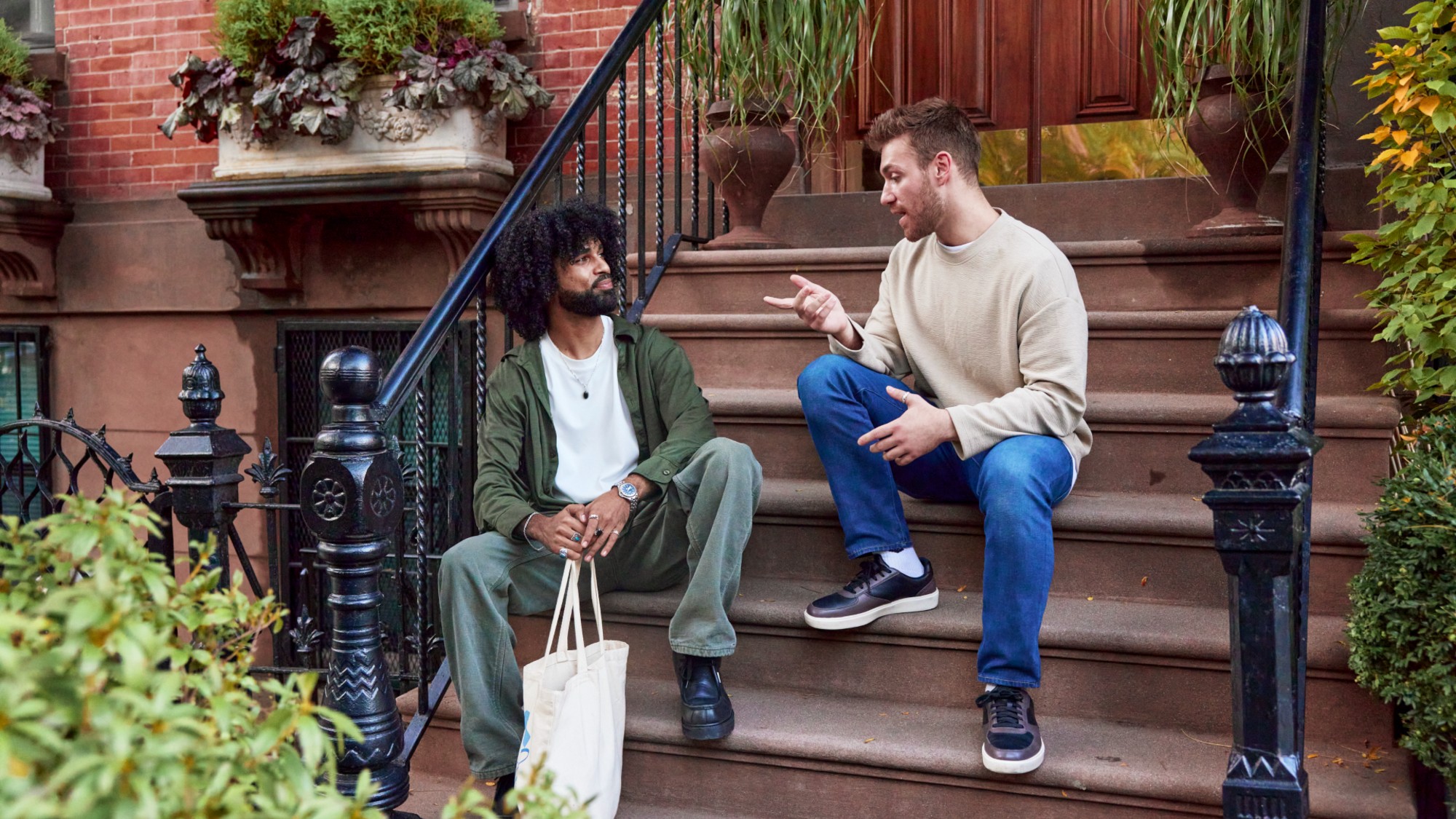This architect might change the way you think about solitary confinement
America's prisons, under the guise of security and safety concerns, isolate and punish people in ways that much of the rest of the world considers barbaric


The Quakers were among the first Americans to devise the idea of solitary confinement based on the notion that a life of quiet contemplation was the best way to help people improve their moral character. Inmates went through meals and work in complete silence, with only the Bible to feed their thoughts. The word "penitentiary" comes from the root of the word "penance," reflecting the original attitude that isolation was a way to rehabilitate.
Today, thanks to modern technology, entire super-maximum security prisons are built where human contact is strictly limited and the idea of rehabilitation is almost entirely absent. The use of solitary confinement has become a topic of humanitarian concern, with both the United Nations and Amnesty International condemning America's reliance on the practice, which violates international human rights norms and, they argue, constitutes torture. Psychologists agree that even just a few days in solitary can lead to an array of health and psychological problems, but America's prisons, under the guise of security and safety concerns, continue to isolate and punish people in ways that much of the rest of the world considers barbaric.
This is exactly what Raphael Sperry, president of Architects/ Designers/ Planners for Social Responsibility wants to emphasize in his new movement to urge the American Institute of Architects to prohibit architects from designing spaces designed for solitary confinement as well as execution chambers.
The Week
Escape your echo chamber. Get the facts behind the news, plus analysis from multiple perspectives.

Sign up for The Week's Free Newsletters
From our morning news briefing to a weekly Good News Newsletter, get the best of The Week delivered directly to your inbox.
From our morning news briefing to a weekly Good News Newsletter, get the best of The Week delivered directly to your inbox.
Sperry argues that the charter provisions of the AIA prohibit its members from violating human rights, which he interprets to mean the building of any spaces that clearly contravene human rights as defined by well-established international bodies. As he pointed out to me, architects wouldn't design a building without a fire stairwell due to concerns about the protection of human life. In his view, asking AIA member architects to agree not to disregard human rights norms is an extension of the same theory, that human life and wellness come first.
But how much influence can an architect have on a broader social problem?
When I asked Sperry this question, he agreed with me that the move was largely symbolic. As he pointed out, architects could design a building that might be misused, such as a gym intended for recreation purposes used instead as temporary overflow housing for inmates. But, he says, architects are responsible for the spaces they build, which are all, in the end, for people.
Recent construction projects in Abu Dhabi, including an outpost of the Louvre designed by architect Jean Nouvel, have come under fire for abusing migrant workers, paying a pittance for wages which are usually commandeered to cover the costs of recruitment fees, housing them in sub-standard conditions, and arresting any who try to unionize. But the architects for these buildings aren't necessarily to blame, despite the high price tag on the projects. (The Abu Dhabi Louvre costs $1.3 billion.)
A free daily email with the biggest news stories of the day – and the best features from TheWeek.com
Similarly, the AIA argues that it's not up to architects to decide how spaces are used. "Solitary confinement is a practice; it is not a specific type of space to be designed," the president of the AIANY wrote in a letter, adding that it is not the architect's job to decide how a space is used, citing the example of an abortion clinic as another space where people might make ethical objections as to its use. The AIA also has an Academy of Architecture for Justice, which provides a checklist for members to consider in the planning of any buildings designed to deal with criminal justice (jails, courthouses, prisons, etc.), which includes design items to limit violence, improve access to rehabilitative programs, and ensure racial equality. While the checklist does include a variety of measures supporting equality and rehabilitative measures, there is no specific prohibition against structures designed to isolate or execute.
In contrast, Sperry argues that his proposed measure represents an important move for his profession, representing a gradual deterioration of society's support for practices that violate human rights. His hope, he says, is to "shift the debate," at least a little, and add to the mounting evidence that solitary confinement and executions are practices that are no longer acceptable in today's society. In our conversation, Sperry emphasized that solitary confinement and execution were not comparable to the AIA's example of abortion clinics because the human rights norms he cites are clear and well-defined. The AIA made an express "commitment to human rights," and implicitly endorsing practices like solitary confinement and executions was a clear violation of that pledge, he says.
At the same time, many supermax prisons and execution chambers are already built and in operation. It's against the ethical codes of physicians to assist in executions, but they happen anyway. On the other hand, economic pressure seems to work — when supplies for lethal-injection drugs became limited because the company producing them no longer wanted to play a role in death, states were forced to create innovative cocktails that don't seem to be working very well. Now, the public pays attention to executions, which may eventually lead to a shift in the law.
If architects refuse to design buildings, perhaps the economic pressure will shift. Certainly, Sperry's greatest opposition comes from architecture firms who design prisons for their clients and don't want to lose their economic viability. While many prisons are already built and currently in use, Sperry points out that building prisons and jails are still a big business. California just built a new execution chamber in 2010, for example, and Arizona has a proposed supermax prison in the works.
Sperry's proposed regulation doesn't prohibit the design of all prisons, just ones that violate human rights. But is there even such a thing as a well-designed prison?
Architect Glen Stantaya has designed what he calls a "PriSchool," described on his website as a "prison + school" hybrid to allow non-violent inmates access to rehabilitative programs and otherwise encourage the kind of behavior that will prevent them from returning to prison again. Sperry points to Scandinavian countries, where guards and inmates eat side-by-side. The expectation, he says, is that prisons are part of the community — the inmates could be you or me. While he doesn't seem overly optimistic that such prisons will be built in the U.S. anytime soon, Sperry does think that by encouraging architects to think about the ethical meaning of the spaces they are building, they will be forced to become more creative and have an impetus to solve the problem of how to care for the nation's convicted offenders in a more humane way.
At the same time, without a dramatic shift in penal culture, it doesn't matter what kind of prisons are built. Thanks to decades of "tough on crime" legislation, politicians gain popularity for keeping felons in prison, and prison authorities have great leeway because the public believes that harsher prison regulations — treating inmates more like predators than people — will reduce crime.
A new report by the Sentencing Project indicates that white Americans are much more likely to be in favor of a tough-on-crime stance than black or Hispanic citizens. In other words, the perception is that those who commit crime are not like us — they are outliers who deserve to be punished. In order for Americans to reform their prison strategies, everyone involved needs to realize that protection of equal rights for all ensures that we recognize each other's basic humanity.
Pacific Standard grapples with the nation's biggest issues by illuminating why we do what we do. For more on the science of society, sign up for its weekly email update or subscribe to its bimonthly print magazine.
More from Pacific Standard...
-
 A running list of everything Trump has named or renamed after himself
A running list of everything Trump has named or renamed after himselfIn Depth The Kennedy Center is the latest thing to be slapped with Trump’s name
-
 Do oil companies really want to invest in Venezuela?
Do oil companies really want to invest in Venezuela?Today’s Big Question Trump claims control over crude reserves, but challenges loom
-
 ‘Despite the social benefits of venting, people can easily overdo it’
‘Despite the social benefits of venting, people can easily overdo it’Instant Opinion Opinion, comment and editorials of the day
-
 The billionaires’ wealth tax: a catastrophe for California?
The billionaires’ wealth tax: a catastrophe for California?Talking Point Peter Thiel and Larry Page preparing to change state residency
-
 Bari Weiss’ ‘60 Minutes’ scandal is about more than one report
Bari Weiss’ ‘60 Minutes’ scandal is about more than one reportIN THE SPOTLIGHT By blocking an approved segment on a controversial prison holding US deportees in El Salvador, the editor-in-chief of CBS News has become the main story
-
 Has Zohran Mamdani shown the Democrats how to win again?
Has Zohran Mamdani shown the Democrats how to win again?Today’s Big Question New York City mayoral election touted as victory for left-wing populists but moderate centrist wins elsewhere present more complex path for Democratic Party
-
 Millions turn out for anti-Trump ‘No Kings’ rallies
Millions turn out for anti-Trump ‘No Kings’ ralliesSpeed Read An estimated 7 million people participated, 2 million more than at the first ‘No Kings’ protest in June
-
 Ghislaine Maxwell: angling for a Trump pardon
Ghislaine Maxwell: angling for a Trump pardonTalking Point Convicted sex trafficker's testimony could shed new light on president's links to Jeffrey Epstein
-
 The last words and final moments of 40 presidents
The last words and final moments of 40 presidentsThe Explainer Some are eloquent quotes worthy of the holders of the highest office in the nation, and others... aren't
-
 The JFK files: the truth at last?
The JFK files: the truth at last?In The Spotlight More than 64,000 previously classified documents relating the 1963 assassination of John F. Kennedy have been released by the Trump administration
-
 'Seriously, not literally': how should the world take Donald Trump?
'Seriously, not literally': how should the world take Donald Trump?Today's big question White House rhetoric and reality look likely to become increasingly blurred